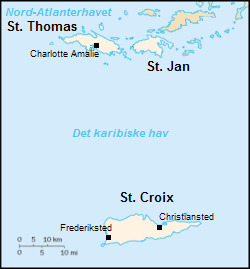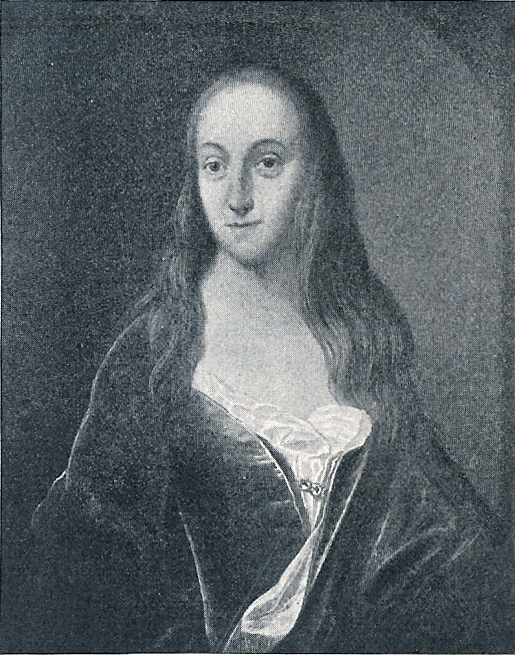|
1672 In Denmark
Events from the year 1672 in Denmark. Incumbents * Monarch - Christian V Events * 26 May – Jørgen Iversen Dyppel is appointed to the first governor of the Danish West Indies Undated * High royal councillor Burchard Ahlefeldt received in 1672 letters patent as Danish Count Ahlefeldt. * Jørgen Iversen Dyppel becomes the first governor of the renewed establishment of St. Thomas in the Danish West Indies. Births * 30 October – Christine Sophie Holstein, salonist (d. 1757) References {{DEFAULTSORT:1672 Denmark Denmark ) , song = ( en, "King Christian stood by the lofty mast") , song_type = National and royal anthem , image_map = EU-Denmark.svg , map_caption = , subdivision_type = Sovereign state , subdivision_name = Danish Realm, Kingdom of Denmark ... Years of the 17th century in Denmark ... [...More Info...] [...Related Items...] OR: [Wikipedia] [Google] [Baidu] |
Christian V Of Denmark
Christian V (15 April 1646 25 August 1699) was king of Denmark and Norway from 1670 until his death in 1699. Well-regarded by the common people, he was the first king anointed at Frederiksborg Castle chapel as absolute monarch since the decree that institutionalized the supremacy of the king in Denmark-Norway. Christian fortified the absolutist system against the aristocracy by accelerating his father's practice of allowing both Holstein nobles and Danish and Norwegian commoners into state service. As king, he wanted to show his power as absolute monarch through architecture, and dreamed of a Danish Versailles. He was the first to use the 1671 Throne Chair of Denmark, partly made for this purpose. His motto was: ''Pietate et Justitia'' (With piety and justice). Biography Early years Prince Christian was born on 15 April 1646 at Duborg Castle in the city of Flensburg, then located in the Duchy of Schleswig. He was the first legitimate child born to the then Prince Frede ... [...More Info...] [...Related Items...] OR: [Wikipedia] [Google] [Baidu] |
Jørgen Iversen Dyppel
Jørgen Iversen Dyppel (February 25, 1638 – 1683), also called George Iversen or Ifversen, or sometimes Doppel in Knox, was the first governor of the renewed establishment of St. Thomas in the Danish West Indies, from 1672 to 1680. His rule was marked by the work to construct a functioning colony and the difficulties of such a task. Biography Early life Dyppel was born in Helsingør, Denmark-Norway as the son of a baker from Holstein or SønderjyllandBricka, Biografisk, 332 and Else Pedersdatter. The name Dyppel comes from Dybbøl in Southern Jutland. After Dyppel's education, he went to the West Indies as an indentured servant.Krarup, Personalhistorisk, 24 Krarup presumes he went with Carib. Partie's ship in 1654. In the West Indies, Dyppel became a clerk with a British trader on Saint Christopher (Saint Kitts). In 1660, he and 3 Zeelandic merchants (most importantly Jan Basselaer) founded a trading company. During the next five years, Dyppel prospered and secured a smal ... [...More Info...] [...Related Items...] OR: [Wikipedia] [Google] [Baidu] |
Danish West Indies
The Danish West Indies ( da, Dansk Vestindien) or Danish Antilles or Danish Virgin Islands were a Danish colonization of the Americas, Danish colony in the Caribbean, consisting of the islands of Saint Thomas, U.S. Virgin Islands, Saint Thomas with ; Saint John, U.S. Virgin Islands, Saint John ( da, St. Jan) with ; and Saint Croix with . The islands have belonged to the United States since they were Treaty of the Danish West Indies, purchased in 1917. Water Island, U.S. Virgin Islands, Water Island was part of the Danish West Indies until 1905, when the Danish state sold it to the East Asiatic Company, a private shipping company. The Danish West India Company, Danish West India-Guinea Company annexed uninhabited St. Thomas in 1672; annexed St. John in 1718; and bought St. Croix from France (King Louis XIV) on June 28, 1733. When the Danish West India-Guinea Company went bankruptcy, bankrupt in 1754, Frederik V of Denmark, King Frederik V of Denmark–Norway assumed direct cont ... [...More Info...] [...Related Items...] OR: [Wikipedia] [Google] [Baidu] |
Ahlefeldt (noble Family)
The House of Ahlefeldt is an ancient German and Danish noble family. It has similar coat of arms with the von Rumohr family, which indicates that they have descended from one House. Legend According to legend, the family descended from "Hunold" Hunoldus comes de Schwabeck, whose great-grandson Konrad (Conradus baron de Alhefeld) 1152 participated in the murder of Herman II, Count of Winzenburg, and then, in 1153, he went to serve King Sven III. In 1154 Konrad was overthrown, and he and his family had to flee from Denmark. However, written of records and evidence of these events are unavailable. Origins The family originated from Westensee near Kiel, Germany. The earliest known ancestor is one Benedict von Ahlefeldt, (d c 1340), whose son and grandsons served King Waldemar of Denmark and received significant pawn fiefs and properties in Denmark. In Duchy of Schleswig the family inherited estates Søgård, Nør, Königsförde-Lindau, Sakstorp and Gelting. In Holstein, B ... [...More Info...] [...Related Items...] OR: [Wikipedia] [Google] [Baidu] |
Saint Thomas, U
In religious belief, a saint is a person who is recognized as having an exceptional degree of holiness, likeness, or closeness to God. However, the use of the term ''saint'' depends on the context and denomination. In Catholic, Eastern Orthodox, Anglican, Oriental Orthodox, and Lutheran doctrine, all of their faithful deceased in Heaven are considered to be saints, but some are considered worthy of greater honor or emulation. Official ecclesiastical recognition, and consequently a public cult of veneration, is conferred on some denominational saints through the process of canonization in the Catholic Church or glorification in the Eastern Orthodox Church after their approval. While the English word ''saint'' originated in Christianity, historians of religion tend to use the appellation "in a more general way to refer to the state of special holiness that many religions attribute to certain people", referring to the Jewish tzadik, the Islamic walī, the Hindu rishi or Sikh g ... [...More Info...] [...Related Items...] OR: [Wikipedia] [Google] [Baidu] |
Christine Sophie Holstein
Countess Christine Sophie Holstein of Holsteinborg, née Reventlow (30 October 1672 – 27 June 1757) was a politically influential Danish salon hostess. Biography Daughter to Count Conrad von Reventlow (1644–1708), Danish Grand Chancellor (prime minister), and Anna Margrethe Gabel (1651–1678), she married Count Niels Friis (1665–1699) in 1688 and statesman Count Ulrik Adolph von Holstein of Holsteinborg in 1700, and belonged to the highest aristocracy in Denmark. In 1707, she was granted Seekamp estate (a part of today's Kiel-Schilksee) in then Slesvig as her own fief by her father. From 1712, the king had a relationship with her half-sister, Anna Sophie Reventlow, and in 1721, he made her queen. Holstein had a large influence over her sister and her royal brother-in-law: she was called "madame la grande chancellière" (Madame Grand Chancellor), and her views were presented through her sister to the king and to the government, thereby making her an important politician ... [...More Info...] [...Related Items...] OR: [Wikipedia] [Google] [Baidu] |
1757 In Denmark
Events from the year 1757 in Denmark. Incumbents * Monarch – Frederick V * Prime minister – Johan Ludvig Holstein-Ledreborg Events Undated Births * Johanna Elisabeth Dahlén, stage actress and opera singer Deaths * 13 January – Bredo von Munthe af Morgenstierne, civil servant, Supreme Court justice and landowner (born 1701) * 4 April – Peder Hersleb, bishop (born 1689). * 31 July – Abraham Lehn, landowner (born 1702) * 37 June – Christine Sophie Holstein, salonist (born 1672) * 3 September – Anna Catharina Materna, actress (born 1731) References {{DEFAULTSORT:1757 In Denmark 1750s in Denmark Denmark ) , song = ( en, "King Christian stood by the lofty mast") , song_type = National and royal anthem , image_map = EU-Denmark.svg , map_caption = , subdivision_type = Sovereign state , subdivision_name = Danish Realm, Kingdom of Denmark ... Years of the 18th century in Denmark ... [...More Info...] [...Related Items...] OR: [Wikipedia] [Google] [Baidu] |
1672 In Denmark
Events from the year 1672 in Denmark. Incumbents * Monarch - Christian V Events * 26 May – Jørgen Iversen Dyppel is appointed to the first governor of the Danish West Indies Undated * High royal councillor Burchard Ahlefeldt received in 1672 letters patent as Danish Count Ahlefeldt. * Jørgen Iversen Dyppel becomes the first governor of the renewed establishment of St. Thomas in the Danish West Indies. Births * 30 October – Christine Sophie Holstein, salonist (d. 1757) References {{DEFAULTSORT:1672 Denmark Denmark ) , song = ( en, "King Christian stood by the lofty mast") , song_type = National and royal anthem , image_map = EU-Denmark.svg , map_caption = , subdivision_type = Sovereign state , subdivision_name = Danish Realm, Kingdom of Denmark ... Years of the 17th century in Denmark ... [...More Info...] [...Related Items...] OR: [Wikipedia] [Google] [Baidu] |
1672 By Country
Year 167 ( CLXVII) was a common year starting on Wednesday (link will display the full calendar) of the Julian calendar. At the time, it was known as the Year of the Consulship of Aurelius and Quadratus (or, less frequently, year 920 ''Ab urbe condita''). The denomination 167 for this year has been used since the early medieval period, when the Anno Domini calendar era became the prevalent method in Europe for naming years. Events By place Roman Empire * Lucius Aurelius Verus Augustus and Marcus Ummidius Quadratus Annianus become Roman Consuls. * The Marcomanni tribe wages war against the Romans at Aquileia. They destroy aqueducts and irrigation conduits. Marcus Aurelius repels the invaders, ending the Pax Romana (Roman Peace) that has kept the Roman Empire free of conflict since the days of Emperor Augustus. * The Vandals (Astingi and Lacringi) and the Sarmatian Iazyges invade Dacia. To counter them, Legio V ''Macedonica'', returning from the Parthian War, moves ... [...More Info...] [...Related Items...] OR: [Wikipedia] [Google] [Baidu] |




